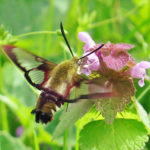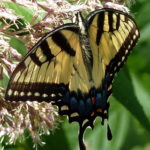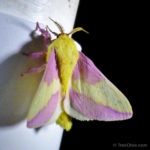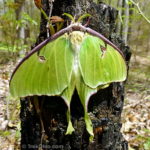Mothapalooza is an annual conference sponsored by the Ohio Division of Wildlife. As its name suggests, the focus on the conference is on moths. Just like people who go bird-watching are said to go “birding,” people who are on the lookout for moths are said to go “mothing.” The conference is geared both toward the mothing enthusiast and the beginner. Activities included daytime field trips, in-house talks, and night-time moth viewings. Some of the daytime field-trips delved into other topics besides moths. This year Mothapalooza was held at the Shawnee State Park Lodge.
Bob and I had considered going to Mothapalooza the previous year, but when we tried to register a couple months ahead of time, they were already sold out! This just goes to show how popular this event has become. So this year we signed up extra-early. Previous to Mothapalooza Bob and I had attended one other mothing event (described here), so we consider ourselves to be beginners.
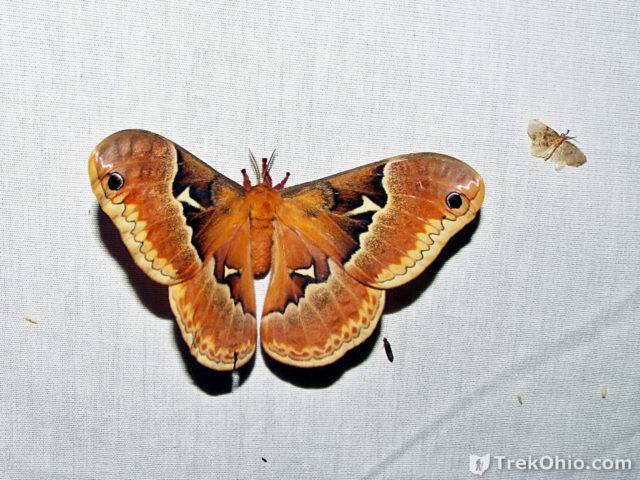
There were a number of field trips from which to choose. Bob and I signed up for the following two:
- In the Shadow of Buzzardroost Rock — this also included fieldwork in caterpillars, which is what I’ll focus on here.
- Herps of Shawnee (herps is another word for reptiles and amphibians) — I will describe our “herping” field trip in a future post.
Daytime Field Trip
Bob and I hiked to the top of Buzzardroost Rock (described here), but I had heard that the off-trail hike to the base of the cliffs was spectacular, so I really wanted to do that. Details about the hike itself will appear in a future post. However during this field trip we also learned how to find caterpillars and caterpillar eggs in the field, and that’s what I’ll focus on here.

Among other things, I learned that since caterpillars are insects, like all other insects they only have six legs. However, many species have fake legs, called prolegs to help them move around while they go through their caterpillar stage.
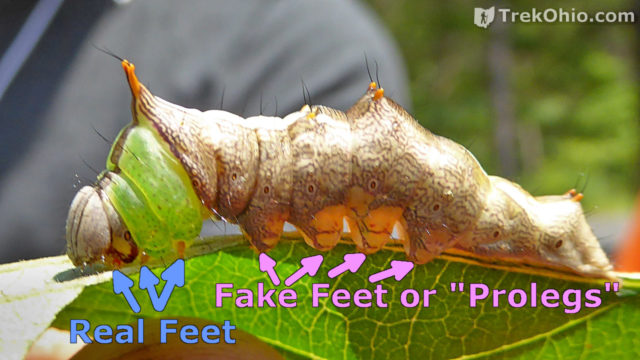
Not all caterpillars have these prolegs. The slug caterpillar has the regular six insect legs, but glides around on a disk.
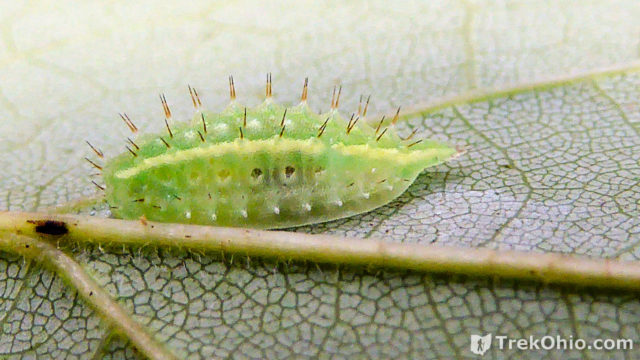
Over tens of thousands of years, caterpillars have been using camouflage so that birds and other predators won’t notice them. When the caterpillar below takes a break from eating, he pretends to be the stem of the leaf.
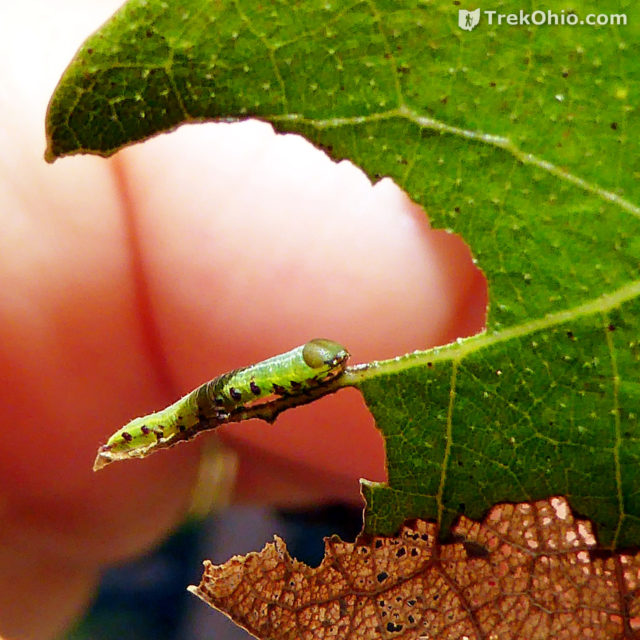
The spicebush swallowtail caterpillar pretends to be a snake. It has a fake face on its thorax to scare predators away.
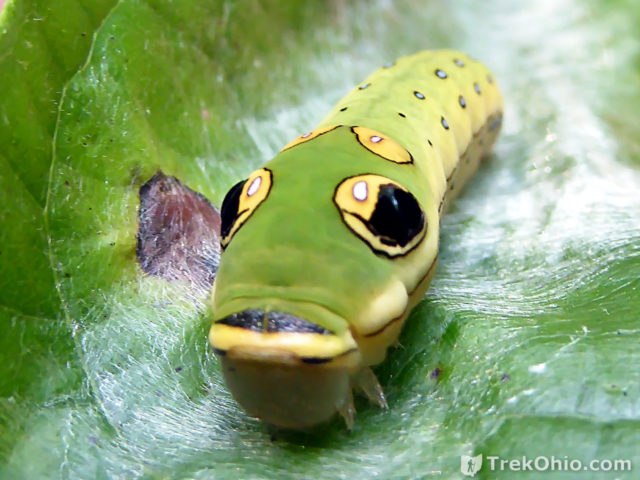
One of the leaders of our daytime fieldtrip was Samuel Jaffe. His website, SammuelJaffe.com, features beautiful photographs of caterpillars. Some of them focus on the many ways caterpillars have developed camouflage to elude predators.
In addition to viewing caterpillars, we also turned leaves over to look for eggs.
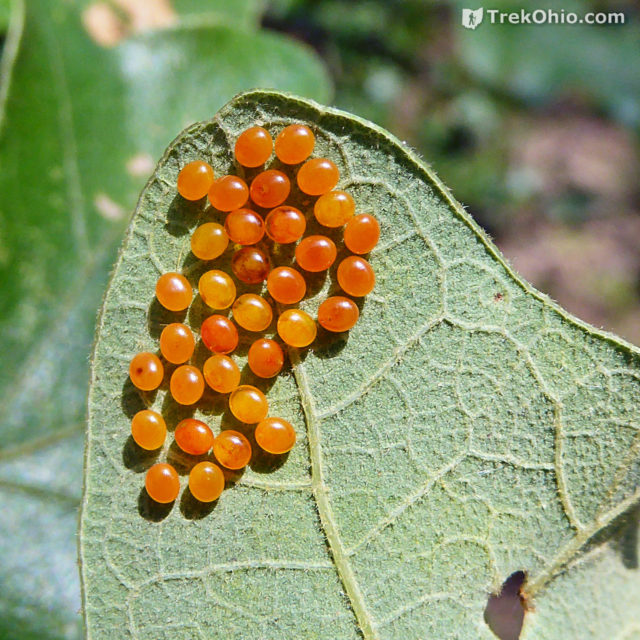
I note in passing that some, caterpillars have venomous spines, so you shouldn’t pick up spiny caterpillars unless you can identify the species.
At the end of the field trip, our leaders took us inside the Eulett Center where they have been keeping caterpillars that turn into moths. The huge one below is the Regal Moth.
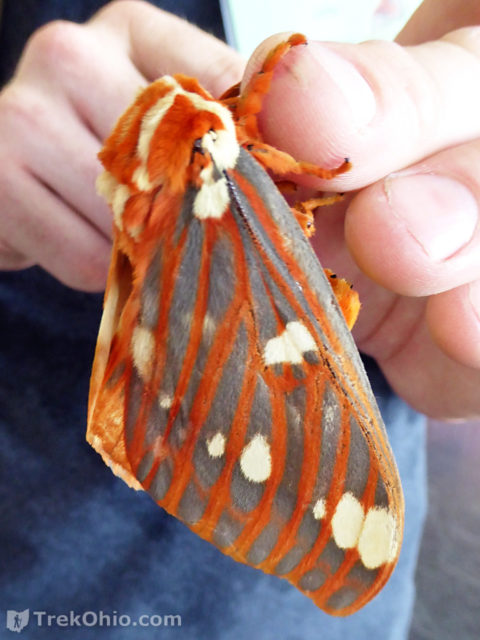
Nightime Mothing
To go birding, you have to go out in search of birds. But to go mothing, you can stay put and attract the moths to where you are. Moth lures use light to draw the moths to a sheet where they can be viewed easily. Typically such lights tend to be ultraviolet (black lights). Some people also use a scent lure (like fruit mashed with beer, or some other secret recipe). During Mothapalooza there were moth lures set up at a variety of locations and habitats to increase the number of species that the participants might get to see. Buses or vans took people from the lodge at Shawnee to the mothing sites. If you liked you could go mothing at one site for a while, return to the lodge, and then get a ride to another site.
Here are what the sheet set ups looked like during the day.
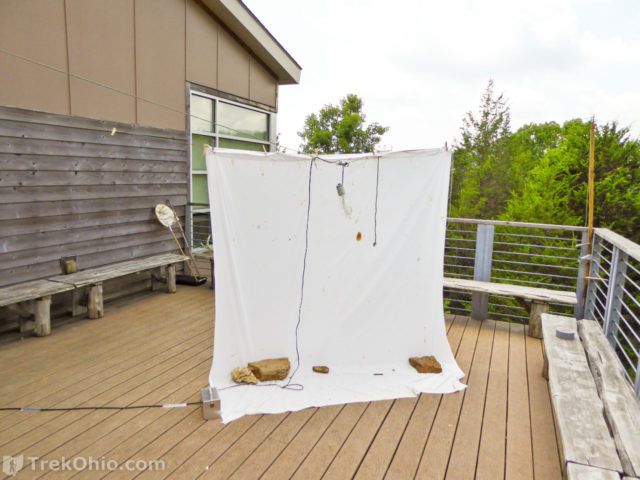

And here’s one at night.
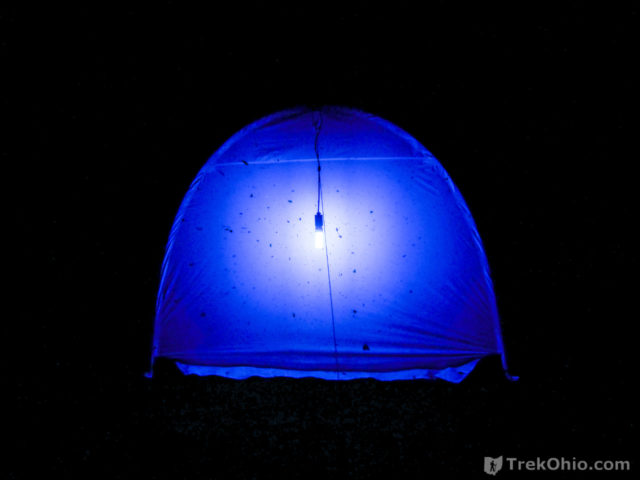
Part of the fun of going mothing in a group is that more experienced individuals will often help identify what species you are looking at. However, it is also fun to try to photograph various species. This gives you an opportunity to try to look up the species when you get home. Nonetheless, for beginners such as us, it was challenging to take photographs under these conditions because you have to deal both with the darkness and the unusual blueish cast of the light. I have tried to brighten and color-correct the photos below to give you some idea of the kinds of moths that we were seeing. I’ve also tried to identify all of the species appearing here. But as I said, we are beginners. If I’ve misidentified any species, please correct me in the comments.
It was hard to miss the big moths. Besides the large silkmoth pictured at the top of this article, we also saw the Blinded Sphinx Moth and the Imperial Moth pictured below.
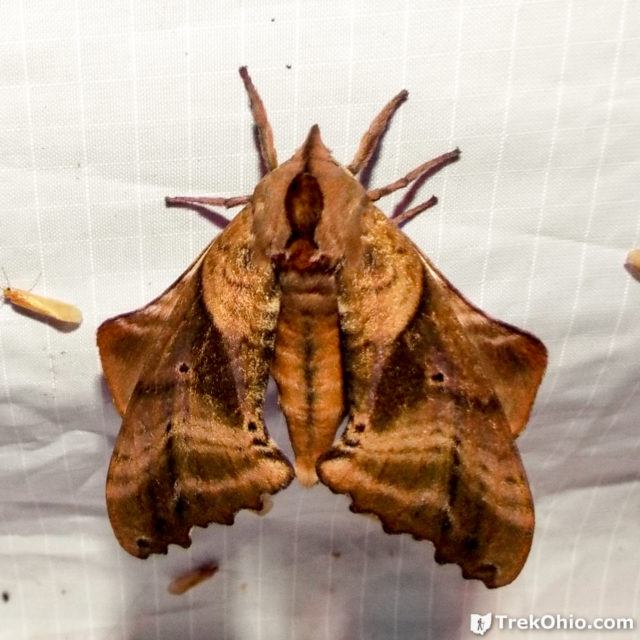
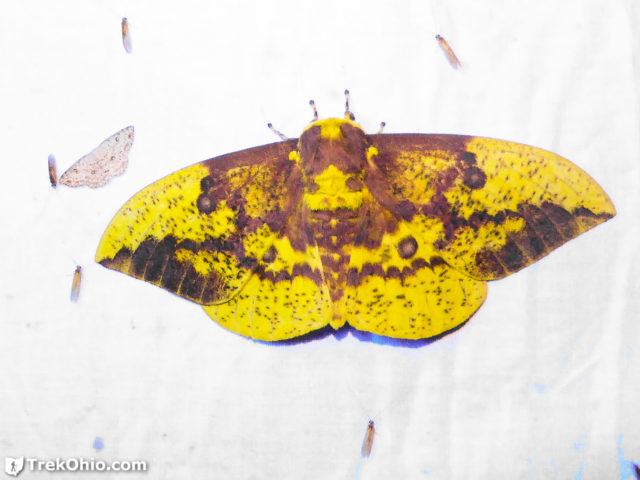
Although there weren’t any luna moths at the mothing sites we visited, I’m told that they were plentiful at other sites. We’ve run into this huge moth while hiking (as described in this post).
Although many species of moths are gray or brown, there are lots of species that are either colorful, or have intricate markings.
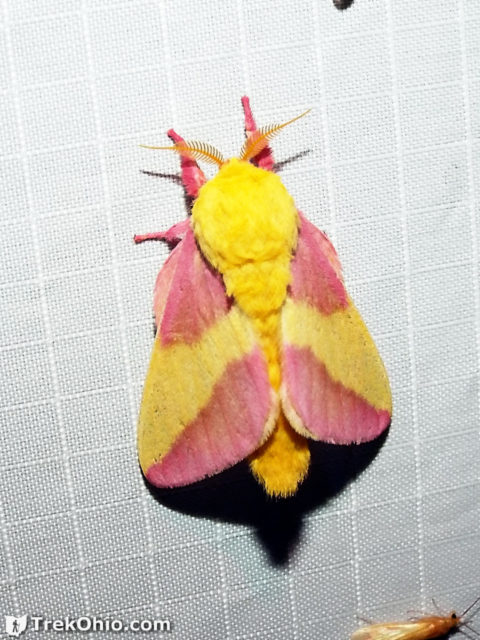
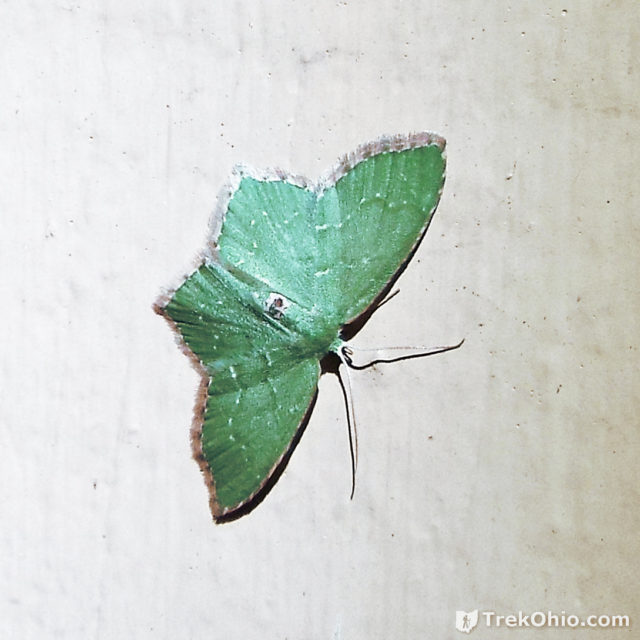
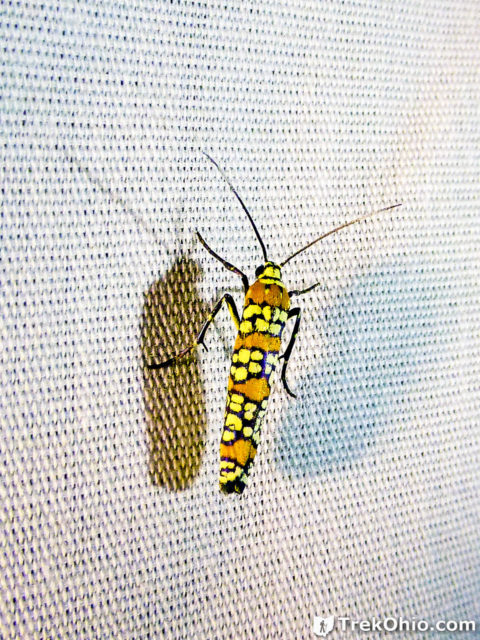
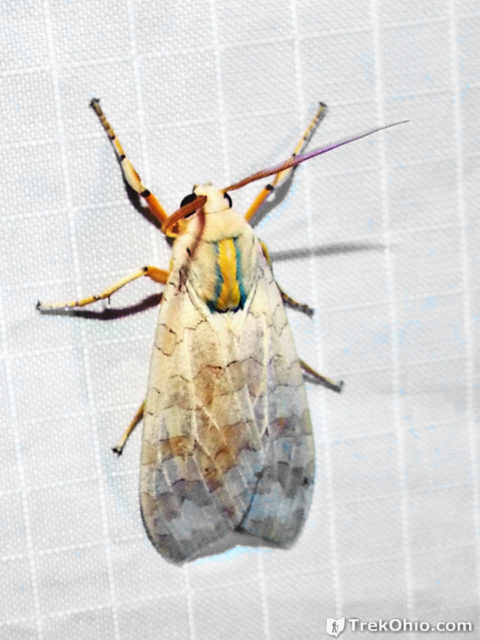
The moth below is called the Hebrew moth. I have been unable to find a definitive explanantion as to why it’s called that. I’m assuming that the markings reminded someone of Hebrew letters.
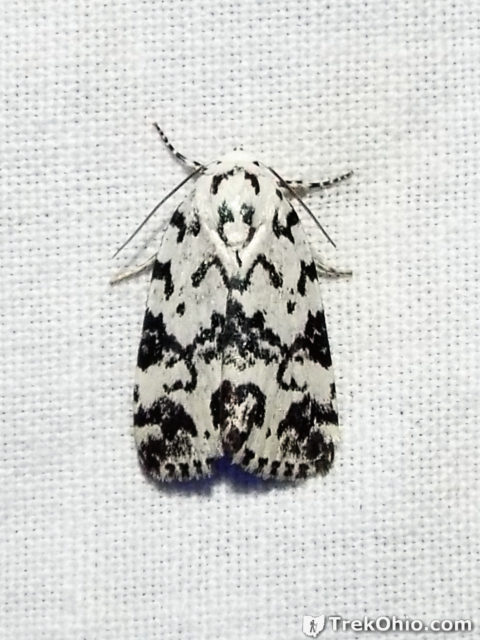
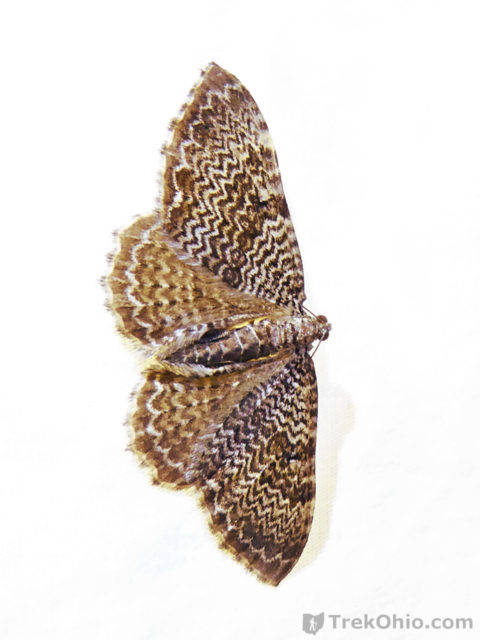
The next one isn’t colorful, nor does it have fancy markings, but the shape reminded me of a stealth bomber.
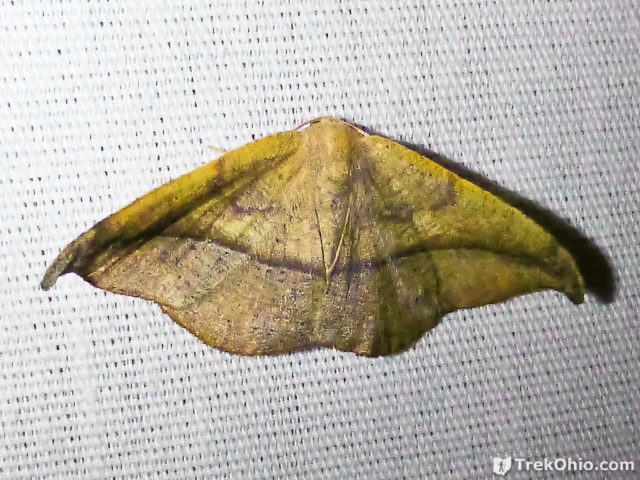
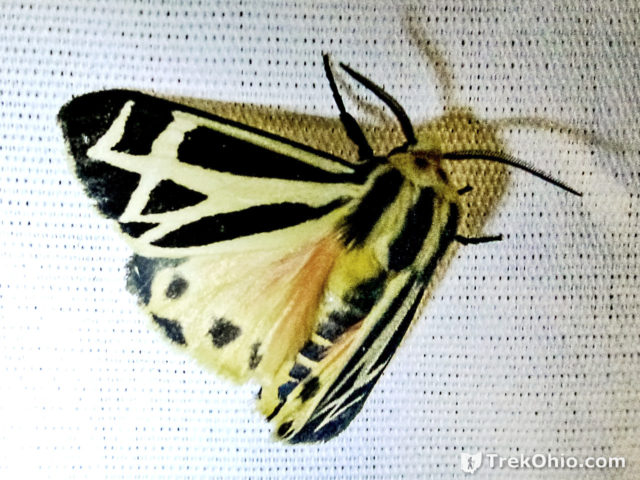
The following moth gets its name because in its larval state it folds a grape leaf and hides in the crease.
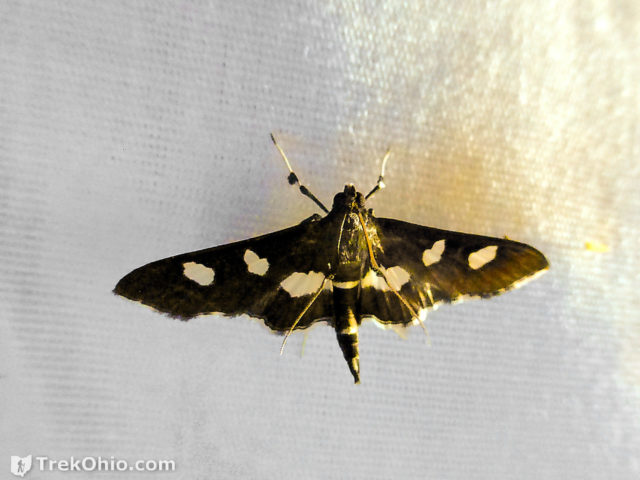
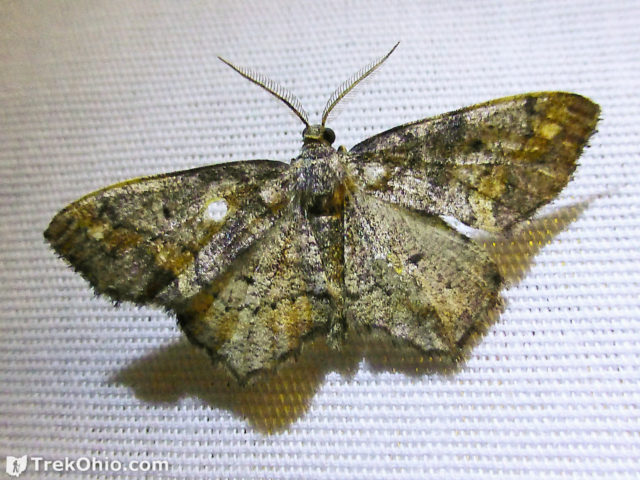
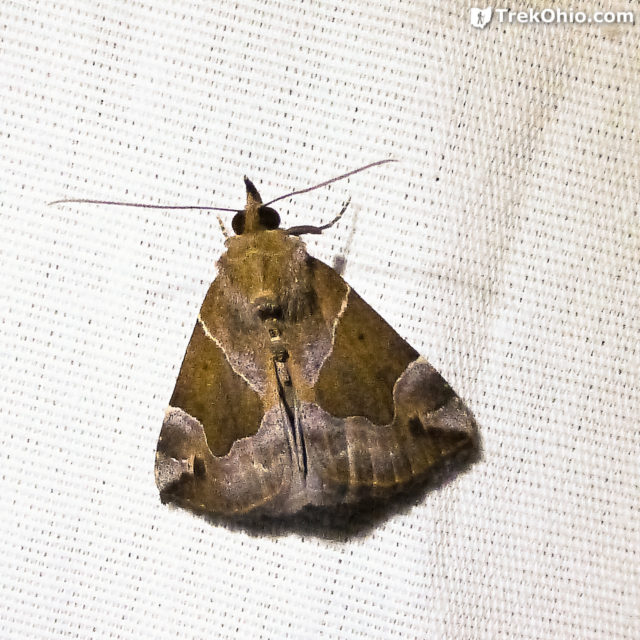
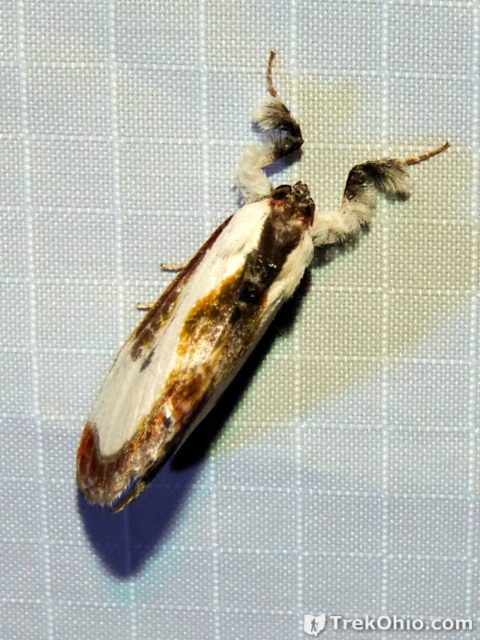
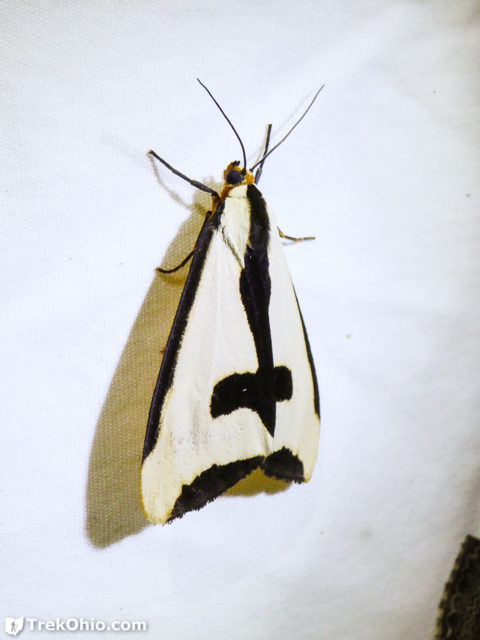
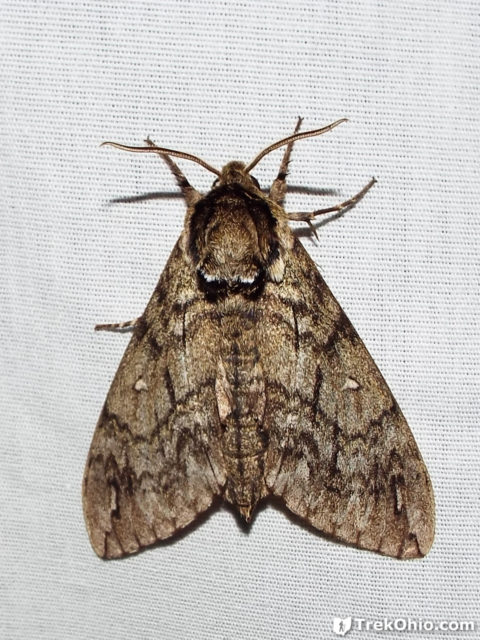
Same species as above can be seen in a more natural setting below. The markings blend in with the bark.
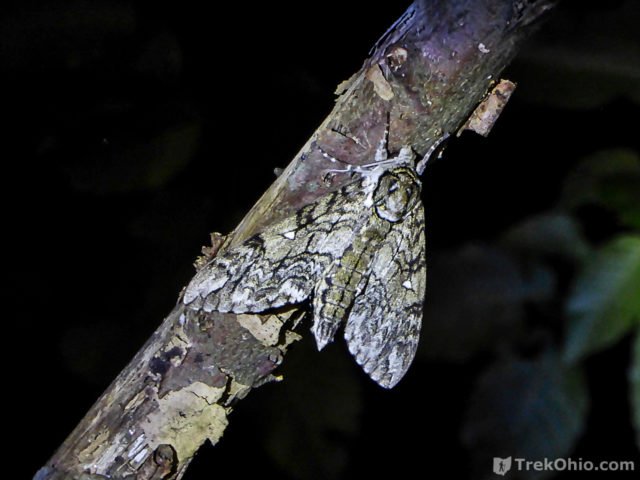
Cycle of Life
I became acquainted with a new insect while I was looking at the stretched out sheet and its moths. It’s called a Mantis-fly because the shape of its heads and arms resembles that of a praying mantis; however, the rest of the insect is more fly-like. It was preying on the smaller moths while they were mesmerized by the ultraviolet lights.
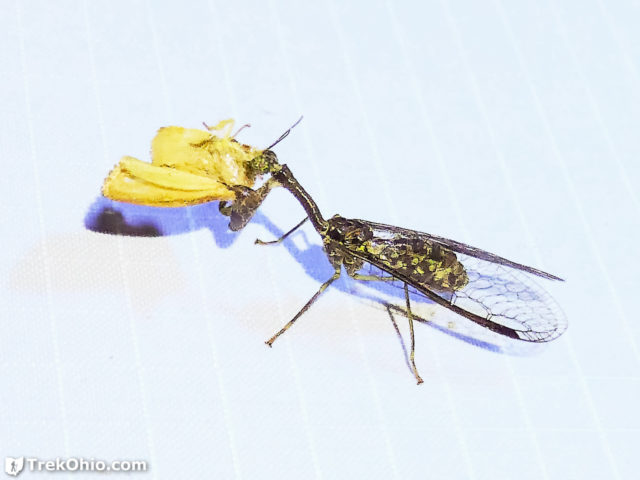
It the photo below it’s curled down its head to get a better grasp of its prey between its jaws and its chest.
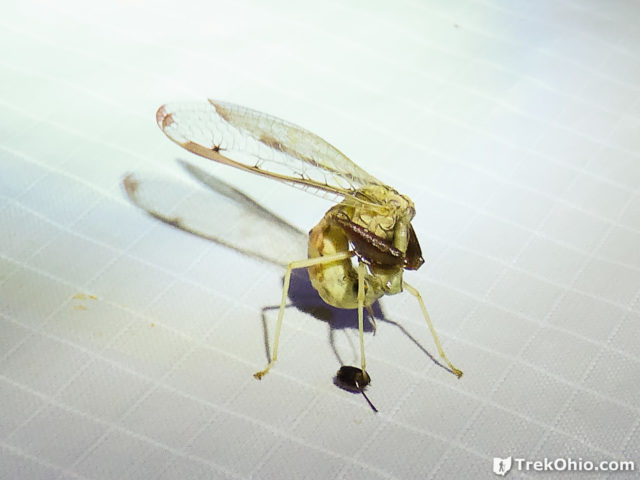
Breakout Sessions and Gatherings
There were a number of breakout sessions, talks, and general gatherings that took place indoors at the Shawnee Lodge. We attended several talks including “Mothology 101” by Mike Gilligan, a talk by Chief Naturalist Robyn Wright-Strauss on the Edge of Appalachia Preserve, a talk by Seabrooke Leckie author of Peterson Field Guide to Moths of Northeastern North America, and more. Pictured below is our final gathering.

Closing thoughts
We both enjoyed the event, and we learned a lot. However one down side was how hot it was. On the day of the field trip described here, it was 96°F at the end of our hike. Normally I wouldn’t go hiking when it was that hot, but this was scheduled so far in advance, the weather could have been anything. However I’ve heard that the event was held in June in the previous year, and I’m guessing the weather would have been milder then. We were lucky that it didn’t rain during any of the scheduled outdoors activities.
Update 08/22/2016
I had originally misidentified the moth in the topmost photo. I have since been learned that it is a Tulip Tree Silkmoth (Callosamia angulifera), and I have updated the text accordingly.
Additional information
- Mothapalooza! — this is the event’s official website. If you are considering going to the next one, you’ll find information about it here when it becomes available.
- Mothapalooza’s Facebooks Page
- ODNR’s Division of Wildlife: Moths of Ohio Field Guide (PDF)
- SammuelJaffe.com — the site features beautiful photographs of caterpillars.
- Jim McCormac's “Ohio Birds and Biodiversity;” Creatures of the night delight avid fans — Describes how both the name “Mothapalooza” and the conference came into being.
- TrekOhio: Attending Our First “Mothing” Event
More on Moths and Butterflies
